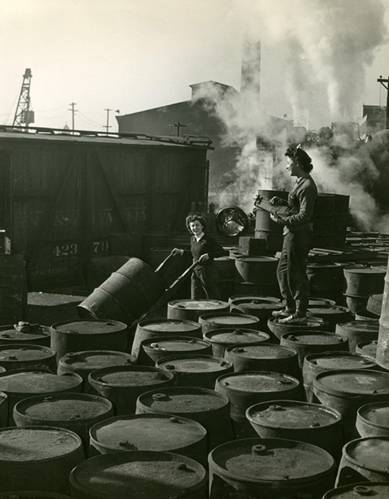|
OCTOBER 2021
|
|
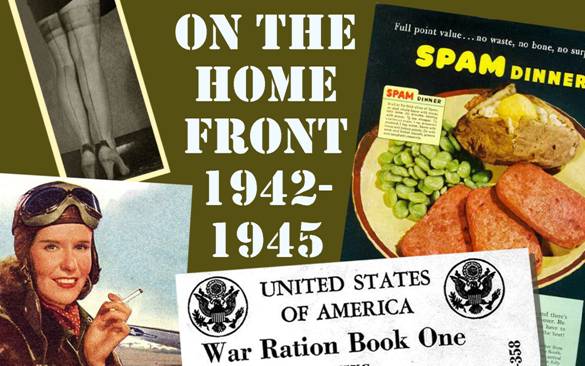
|
|

|
In the past, Ancient Hixtory examined how
Hicksville
was altered by external phenomena such as World War I, the
influenza pandemic, and the Great Depression.
This month, it looks at how World War II transformed the
village into a vital part of the Home Front.
|
First of Two Parts
Introduction
The World War II years
were unlike any other era that
America
- and
Hicksville
- ever knew. Consider this
statistic: 11,000,000 million Americans served in the wartime Army, a
force which had numbered fewer than 250,000 when the war began.
Those millions, plus millions more in the other armed forces,
were removed from the nation's labor force at the very time that the
demand for labor was skyrocketing: agriculture, manufacturing, and
transportation all had to function at unprecedented levels.
To meet the needs of those
who fought the war, and to mitigate the impact of the shortages which
inevitably occur during wartime,
America
was reincarnated. It became
the Home Front, governed by
new rules and new practices, in which everyone's life was repurposed
for victory.
In concept,
America
's Home Front faced four challenges:
|
▪
|
supplying people
(civilian workers as well as people in uniform)
|
|
▪
|
supplying food
(farming, fishing, etc.)
|
|
▪
|
manufacturing
|
|
▪
|
minimizing critical
shortages
|
The wartime changes were
especially pervasive in
Hicksville
and its environs, for the region played multiple roles: home to
agriculture, center for aviation research, and large-scale manufacturer
of aircraft and technology.
|
Note to Readers: In recent decades, as the
members of "The Greatest Generation" have dwindled, their
children and grandchildren have done their best to remember and
honor them. To use
the words that Abraham's
Lincoln
spoke at
Gettysburg
, that is "fitting and proper."
True heroes should be remembered.
However,
this article (the first of two) is about the Home Front.
It is not about those who fought, or even about those who
died, in uniform during World War II.
I hope that future AH articles will be able to tell some
of their stories.
|
People,
Food, and Manufacturing: Interconnected Challenges
America
began getting serious about
the coming war about two years before
Pearl Harbor
was attacked. After months
of preparation, the new Draft began late in 1940, and the
Hicksville
Selective Service Board had
its first quota to attain. By
July 1, 1941, it would have to supply at least 425 civilians fit to wear
uniforms, either as draftees or enlistees.
As that deadline
approached, the combined population of
Hicksville
and the surrounding villages grew, thanks to the arrival of well over
one thousand new families. Most
of them had been attracted to the area by the pre-wartime jobs that now
were being created at the local defense plants.
|

|

|
|
Brooklyn
Daily Eagle, November 26, 1940
|
Brooklyn
Daily Eagle, July 27, 1941
|
Those new families needed
homes, and they had cars to be serviced, and growing children to be
taught, fed, and clothed - at a time when there were 425 fewer local
men in the labor market to work in construction, in garages, on farms,
in factories, and in stores.
Clearly, there were problems ahead, and
Hicksville
experienced one quite early, as it tried to adapt to the parallel
demands for more soldiers and more wartime labor.
The head of its Draft Board, dentist Elwood A. Curtis (no
stranger to readers of
Ancient
Hixtory)
initially was unhappy that some men, deferred from the draft as
essential farm workers, had taken jobs at local defense plants.
Upon reflection, however, he realized that much farm work was
seasonal, and that employing otherwise-idle farm laborers in a second
essential industry would be a good thing.
|
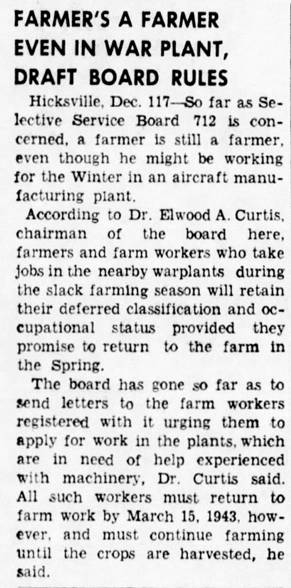
|
|
Brooklyn
Daily Eagle, December 17, 1942
|
Labor shortages steadily
became acute, so acute that many employers eventually noticed the
obvious: You could replace male workers who went off to war by opening
more jobs to women. The LIRR
hired many (in its own words) "Train Women" to fill wartime
vacancies. The first women
brought on board became Engine
Cleaners for steam locomotives, doing labor-intensive tasks
previously performed only by men.
In 1942, among the
jobs for which Grumman hired women was Test
Pilot.
|
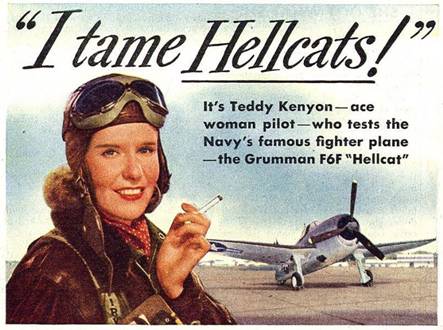
|
|
Cecil
"Teddy" Kenyon in a wartime Camel cigarette advertisement,
with Grumman headquarters shown in the background
timeline.com
|
In some cases, the most effective way to replace laborers lost to
military service was to employ migratory workers.
|

|
|
Brooklyn
Daily Eagle, September 4, 1942
|
|
***
|
Critical
Shortages: Groceries
Perhaps the best-known
aspect of the Office of Price
Administration's restructuring efforts during the Second World War
was the use of Ration Stamps,
an idea which it imported from
Great Britain
. The goal was to give
America
an effective way to reduce hoarding, and to preclude Black Market sales
of items that were in short supply (cf.
America
's more recent panic-created "shortage" of toilet paper).
|
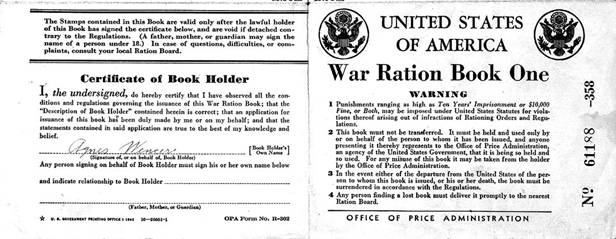
|
|

|
|
Outer cover and surviving partial interior page of
first Ration Book issued to Agnes Wencer, May 6, 1942
Collection of Ronald A. Wencer
|
After starting with
the simple black ink tear-out "stamps" illustrated above, Ration
Stamps (for food, clothing, gasoline, shoes, and other commodities)
evolved in steps into engraved, perforated, color ones, with pictures of
warships and guns. The newer
stamps were vivid reminders that Americans were risking their lives to
win the war. More important,
they were harder to counterfeit.
Food rationing shifted to a point system, in which scarcer items
required the redemption of more points.
This gave the public the ability to choose how it spent its
points. A cartoon (created
for the government by experienced animators, and led by Warner
Brothers legend Chuck Jones) was shown in movie theatres to explain
to the public how to use the point system.
It is available at a number of locations on The Internet;
here's a link to one: https://www.youtube.com/watch?v=NLahMe1Gdsk
Note that a retailer's
failing to properly enforce rationing, or to do the requisite
record-keeping (a red flag that a retailer might be pocketing
customers' stamps for Black Market resale), was taken seriously.
In the story below, the Big
Ben market on Hicksville's
West Marie Street
was one of several on
Long Island
penalized for such infractions. That
store was forbidden to accept Ration
Stamps for one week - a severe penalty in a business where profit
margins are small. During
that week, regular customers would have to shop elsewhere for their
food, and some might not return to Big
Ben when that week was done.
|

|
|
Brooklyn
Daily Eagle, May 9, 1944
|
|
***
|
Shortages
Nonetheless
Although rationing
mitigated some shortages, the supplies of certain grocery items, like
meat and fish, were chronically low.
People had to adapt. The
old WW I practice of declaring "meatless" days was encouraged - if
people or restaurants served meat on a meatless day, they were publicly
scorned as unpatriotic.
|

|
|
National Geographic, July 1943
|
Even SPAM - yes, SPAM
- could be in short supply at home.
As the above ad apologetically explained, much of it was being
sent to the military, where it doubtless was greatly appreciated.
Right.
Sugar was always hard to find, from before the war, until two years
after the war ended. It was
the last item to be rationed.
Coffee quickly proved too difficult to ration.
The initial approach was to let families purchase the equivalent
of one cup per day for each family member who was at least fifteen years
old. Imagine the hardship
this imposed on merchants and the rationing program.
How do you verify the age of everyone in millions of customers'
households? How do you prove
that someone's brother-in-law is living as part of the family?
What about the customers' children who turn fifteen?
|
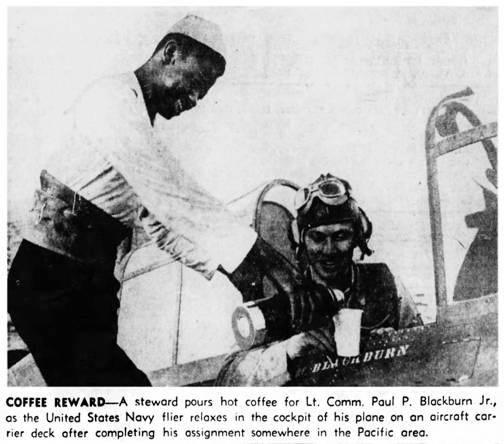
|
|
You can't be
expected to fight a war without coffee, right?
Brooklyn Daily Eagle, January 9, 1943
|
Besides,
it was so hard to find coffee at local stores that many Americans
resorted to wannabe coffee products, which they drank either instead of,
or in combination with, real coffee.
Incidentally, there was no actual global coffee shortage.
The problem was that the ships which traditionally had brought
coffee to the U.S. now were needed for running other routes, with
higher-priority cargos.
|

|
|
Brooklyn Daily Eagle, December 14, 1942
|
Less
than a year after coffee was first rationed, it was removed from the
ration list - rationing had not helped keep coffee on stores'
shelves. Those coffee
substitutes would be around for a while.
Doing
Without Driving (almost)
During World War I,
Washington had - temporarily - nationalized the country's
railroads under the banner of the United
States Railroad Association. Despite
many Americans' inbred abhorrence of anything that smacked of
socialism, people accepted this, and other far-reaching Federal
emergency measures, rather quietly.
Locomotives were reallocated from the railroads which owned them
to ones which the government thought needed them more.
Locomotive builders had to construct new engines only according
to government-devised standard designs (much as automakers of the era
had to build standard Liberty Trucks of a common design). The government decided where
trains went when, and what they carried.
In World War II,
government control of industry was more widespread.
For example, the demand for one of Grumman's most effective
aircraft, the Avenger torpedo
bomber, was so high that General Motors factories in California were
directed to build Avengers.
By the war's end, GM had built more of them than Grumman had.
Similar stories can be told about all the era's big American
automakers. Studebaker made
trucks for the Army, and engines for bombers and big transports.
Packard made engines for different branches of the military, most
notably the one for the P-51 Mustang.
Hudson's efforts included engines for the landing craft used on
D-Day, and more than 33,000 20mm cannons that were used by the Navy.
One of the Chrysler companies built Sherman tanks.
Nash made the engine for the F4U Corsair.
During the time that automotive companies worked on war projects, they
were too busy - and they were forbidden - to make vehicles for
civilians. Americans would
have to keep their old cars, the majority of which had been purchased in
the 1930s, going until peace arrived.
Gasoline consumption was managed in a multiple ways.
Gas stations frequently were closed one day a week.
There were special gasoline ration cards, issued to an individual
for use only with her/his own car. With
the card came a matching windshield sticker, which classified the owner
according to occupation. A
defense worker could buy more gallons at once than the ordinary person
could; a doctor or nurse could buy still more. Emergency, VIP, and farm
vehicles all had their own categories.
In and around Hicksville, there were so many defense workers that
certain gas stations were set aside just for them.
|
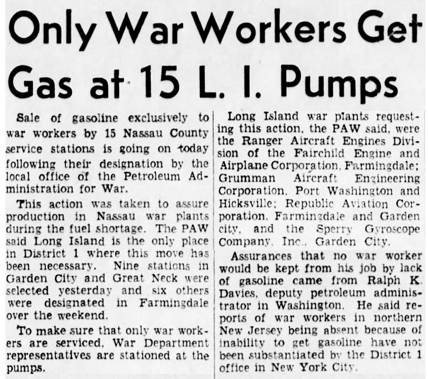
|
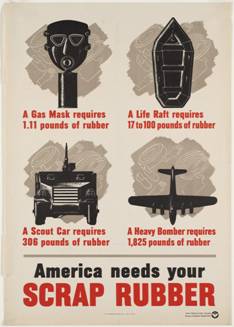
|
|
Brooklyn
Daily Eagle, August 25, 1943
|
War
Production Board Poster
sarahsundin.com
|
Automobile tires posed a
serious problem. In 1940,
synthetic rubber was a new product, still being tested.
It was anticipated that, apart from those involved in the early
tests, American civilians and military personnel would have to ride
through the war on natural rubber* - and early in 1942, Japan had
seized the nations that supplied over 90% of that.
Thus, rubber was much harder to obtain than crude oil, which led
to the belief that gas rationing, and the lowering of America's speed
limits to 35 mph, were measures taken more to make the nation's tires
last longer than to save gas.
Unless civilians' jobs put them in special categories, they were
allowed to own no more than five tires each.
They would not be able to purchase new tires while the war
continued, but - and only if given permission by local officials -
they could have worn-out tires recapped.
*As things worked out, different
synthetic rubbers were introduced during wartime for a number of small
products, including soles for shoes.
Synthetic tires were approved for use by the military during the
latter years of the war, but I do not believe that (apart from testing)
any were made available to civilians in wartime.
Scrap
Drives
I would not be surprised
to learn that the phrase "Reduce, Re-use, Recycle" was first uttered
during an ancient war by some now-anonymous Hittite or Assyrian ruler,
who desperately needed to melt down some kettles and have them forged
into swords (or, on another day, into plowshares).
I know of two abundant sources of scrap steel in Hicksville which were
plundered during World War II. Beneath
the paving of West John Street and a small portion of Broadway, nearly
forgotten, lay the rails once used by the trolleys of the New York and North Shore. The
other source, on Barclay Street, and famous in the automotive world
because of the classics and the racing cars that emerged from it, was
Mike Caruso's scrap business.
|
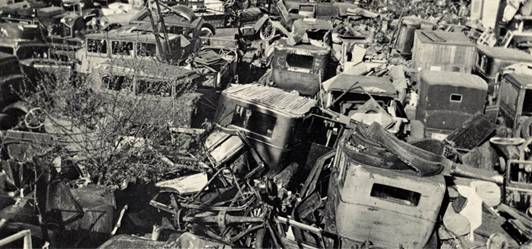
|
|
Caruso junkyard in 1937, before the advent of wartime
scrap drives
The Bulb Horn, January-February 1964 issue
|
Most scrap drives were
appeals to individuals, urging them to relinquish things which might be
collecting dust and rust in their homes and garages.
School groups and Scouts proved especially adept at running such
drives.
Metals were a prime
target, although behind the scenes, the efficacy of recycling certain
metals for the war was questioned. The
recycling of iron and steel long had been recognized as effective, and
in wartime, it became more so, as it reduced the nation's need to
mine, ship, and process ore. Brass
- ideal for making ammunition - was in high demand and short supply,
so recycling it made sense. In
contrast, aluminum recycling proved both more difficult and less
effective.
The dire need for rubber triggered scrap drives for old rubber items:
electrical insulators, rubber balls, bicycle and automobile tires,
rubber dolls, girdles, even hot water bottles.
The wartime public's cooperation was enthusiastic.
|

|
|
New York Daily News, July 17, 1942
|
There was, however, an
unpublicized problem, one which still vexes environmentalists.
Old rubber cannot really be turned into a replacement for new
rubber. You cannot, say,
melt down old tires and turn the resulting glop into new tires - which
is precisely what government wanted scientists to find a way to do in
the 1940s. For a while, they
tried revitalizing rubber by grinding it up and mixing it with petroleum
to make new tires, but the results were unsatisfactory.
Paper recycling was far more effective, and it helped the war effort by
letting loggers concentrate more on cutting down trees for wood-frame
construction. Rags also were
collected, so that their fibers could be reused.
This is a good point at which to note that certain fabrics were
unavailable to people on the Home Front.
Silk, which primarily originated in Japan and in other places
then under Japanese control, was obviously one.
Another was nylon, then a new product, which was being used
exclusively by the military, mostly for parachutes.
The lack of these two fibers meant that, even for formal
occasions, American women had no decent hosiery to wear.
In consequence, a common wartime practice was for women to cover
their legs with foundation makeup, and then paint or draw (sometimes
with a friend's help, and usually using eyebrow pencil) mock hosiery
seams up the rear of their calves, or beyond.
Some stores even provided leg-painting salons!
For today's generations,
perhaps the most surprising scrap recycling effort of the war was the
widespread collection of fats left over from household cooking.
As explained to Pluto and Minnie Mouse in the Disney
cartoon at this URL:
https://www.youtube.com/watch?v=Z4497GEGOOg
, kitchen fat could be saved at home in a can.
When the can was full, it could be taken to a local butcher or
grocer in exchange for cash. You
were paid (modestly) for saving it.
Why? Because fats
were used to make the
glycerine compounds
needed to manufacture explosives!
This is where we pause
until next month - when we will discuss bullets made in Hicksville
that may or may not have been defective, how to put a pen in the pocket
of your Army uniform without breaking regulations, why you might need to
buy a special ink to write your wartime letters, and lots of other
stuff.
Stay tuned!
|





